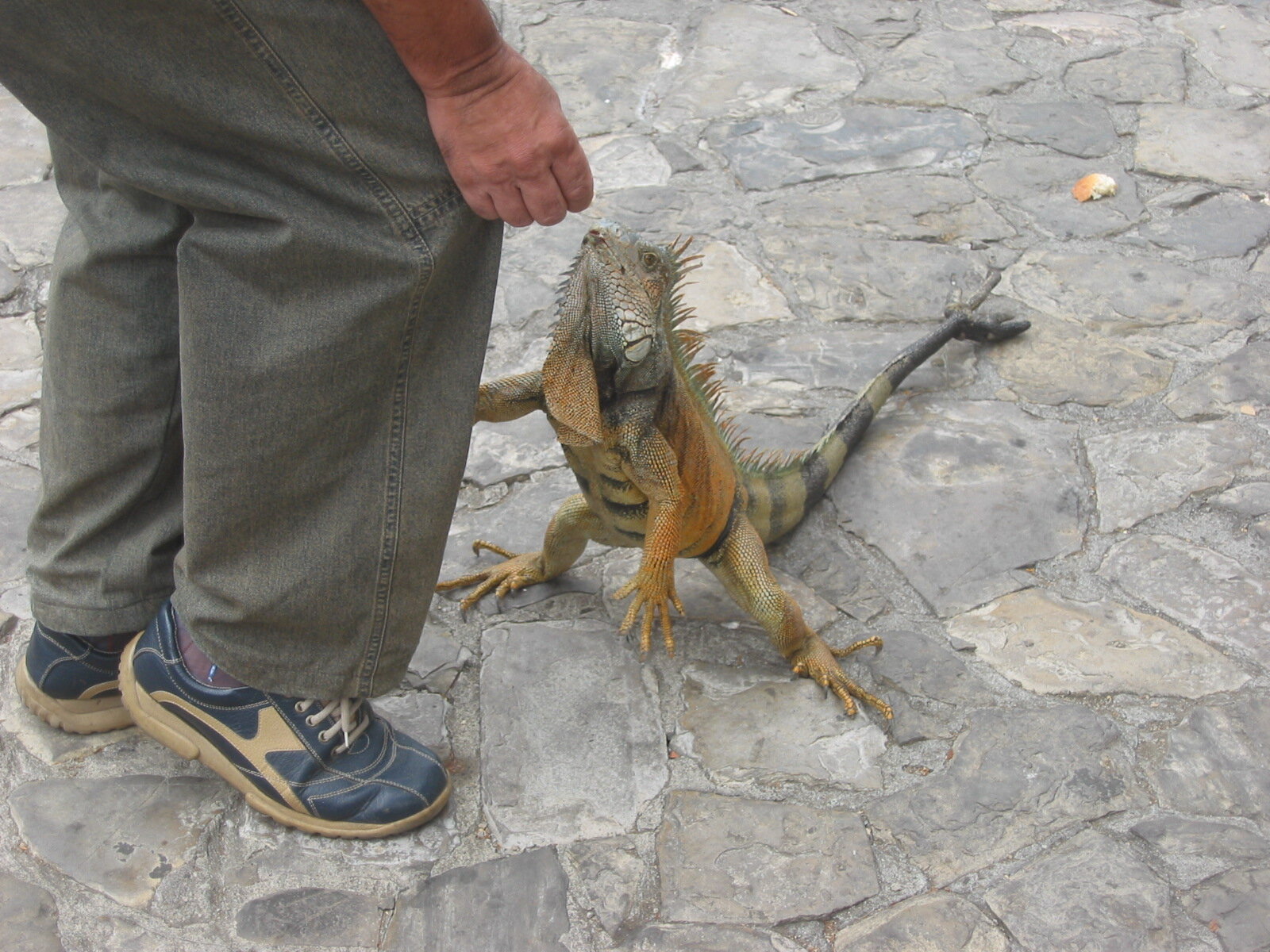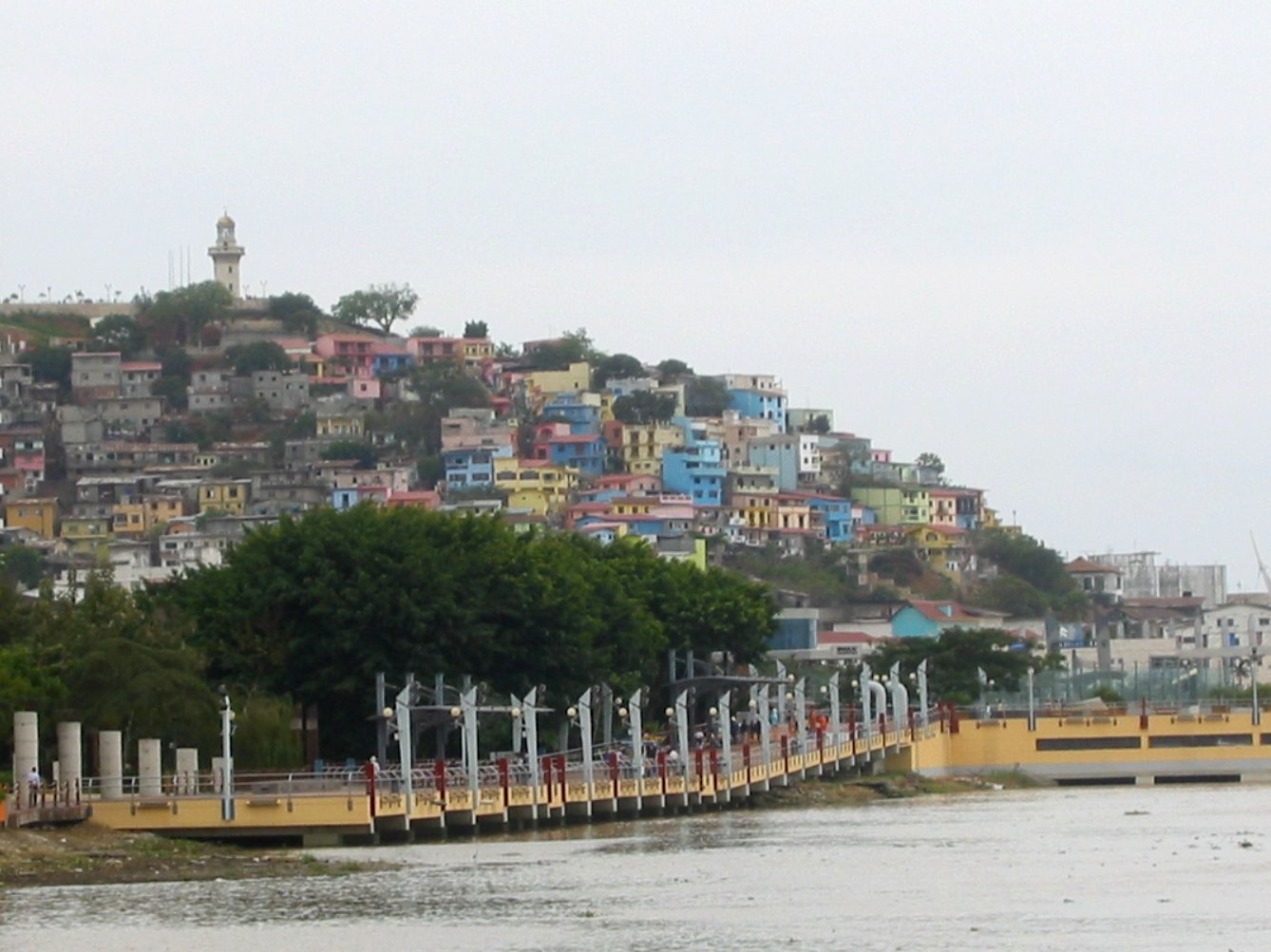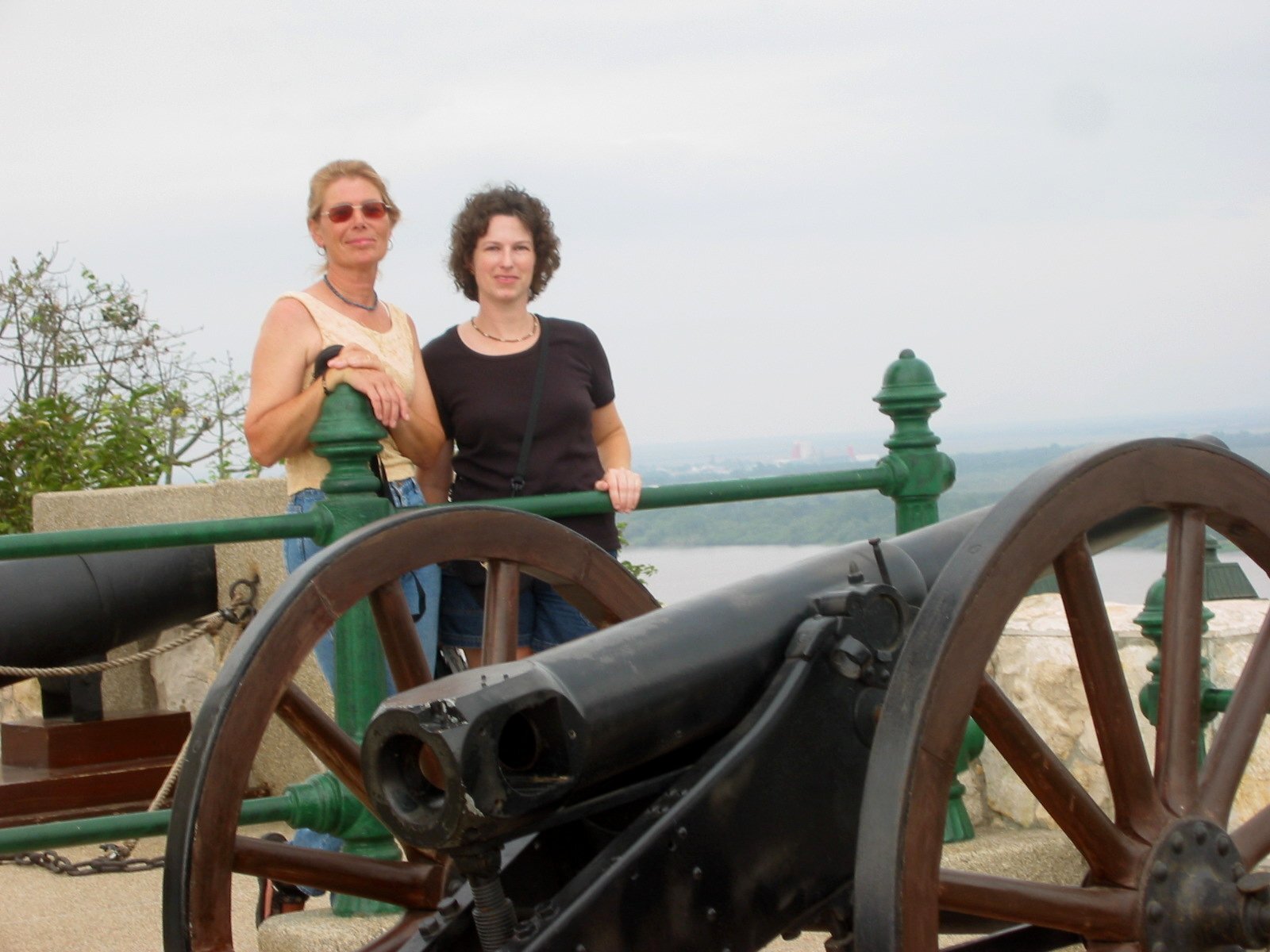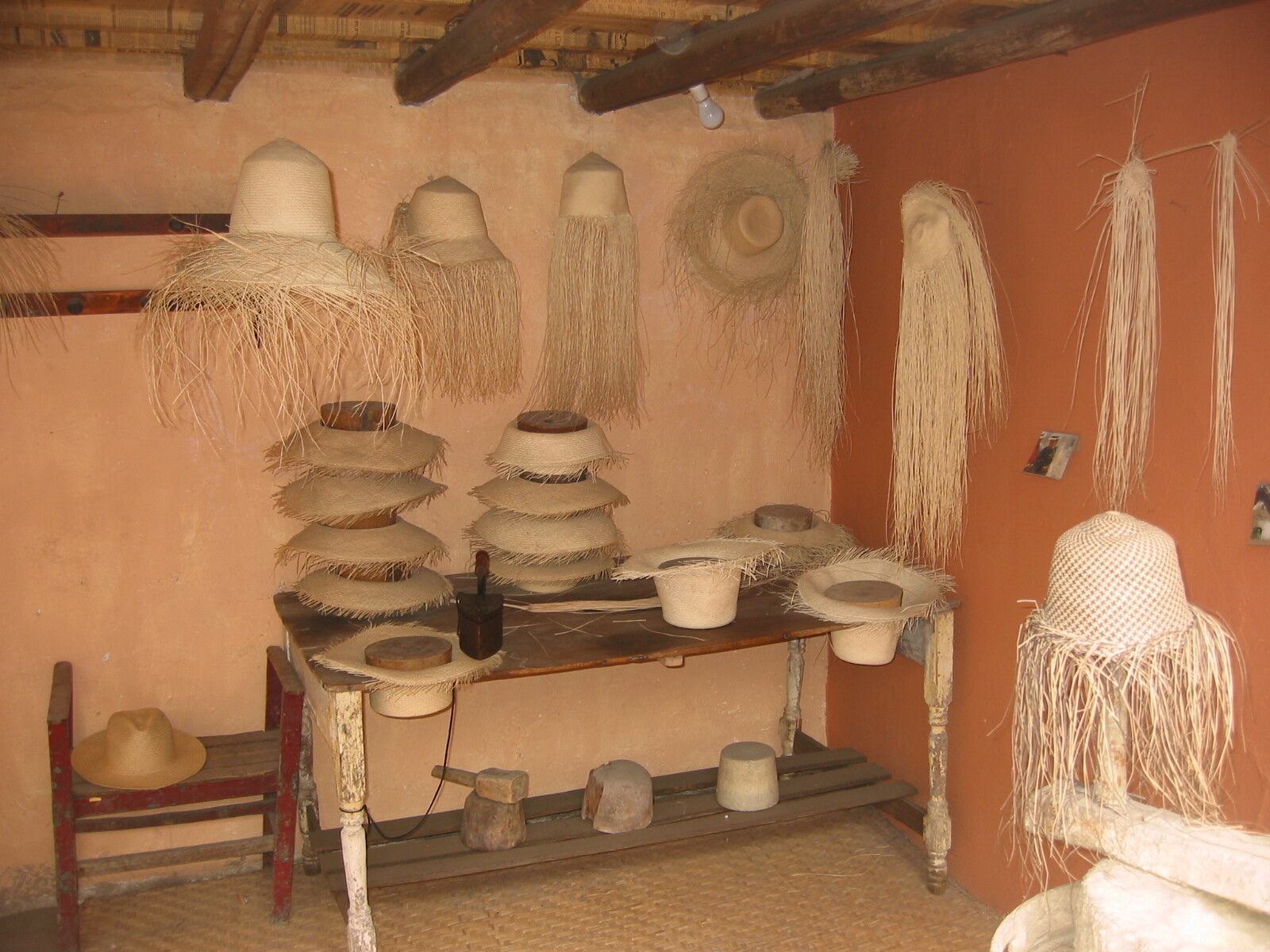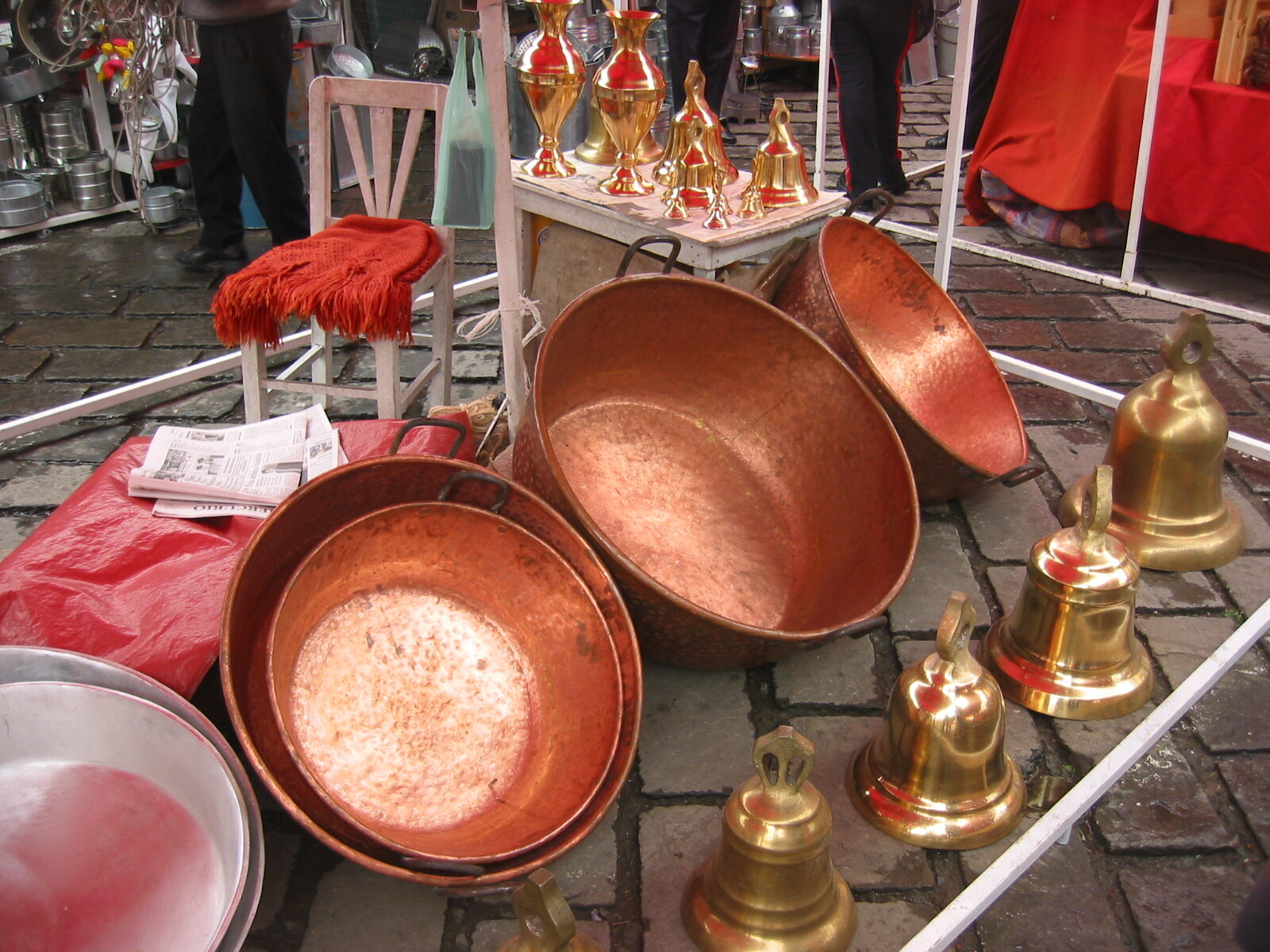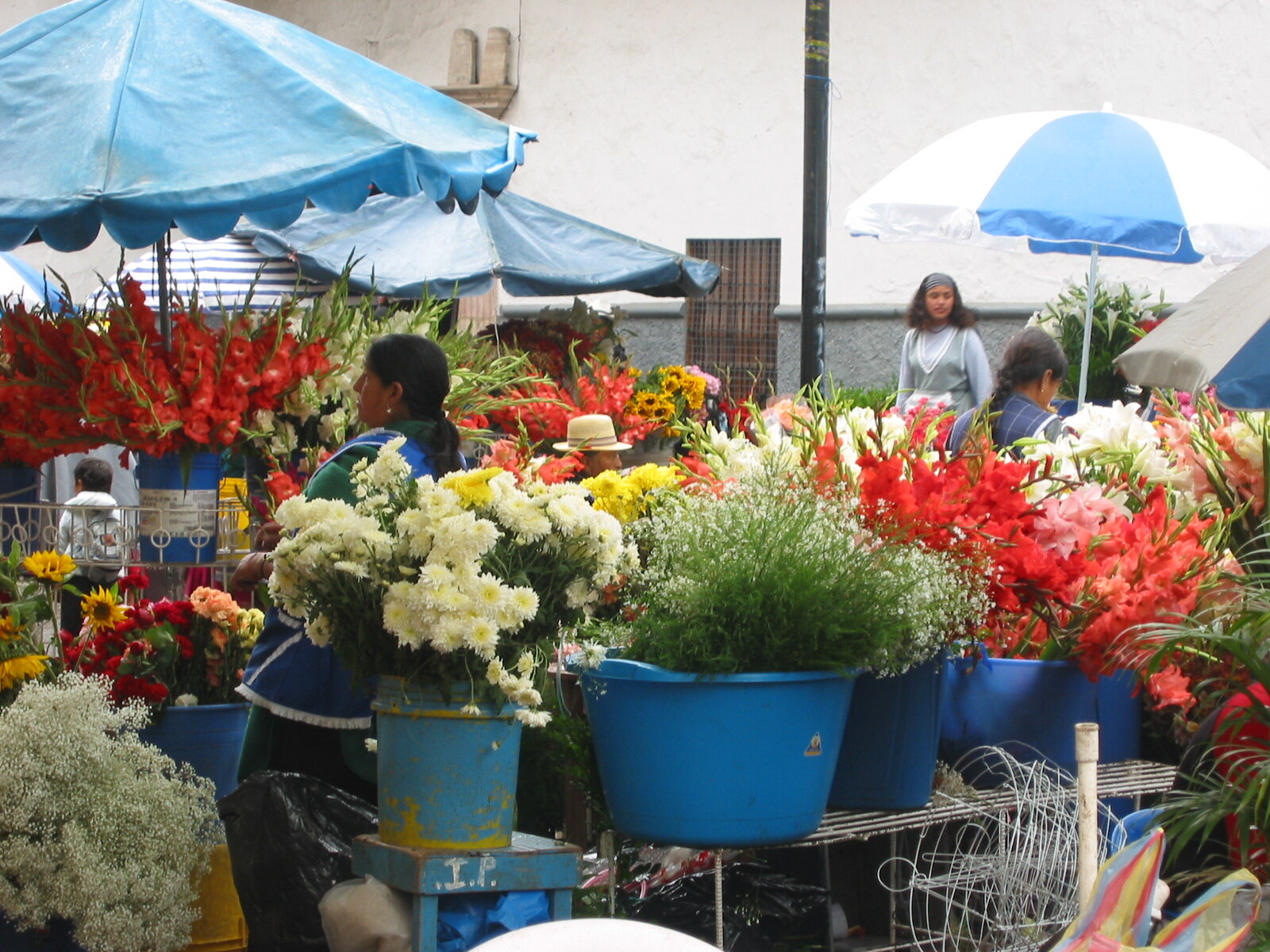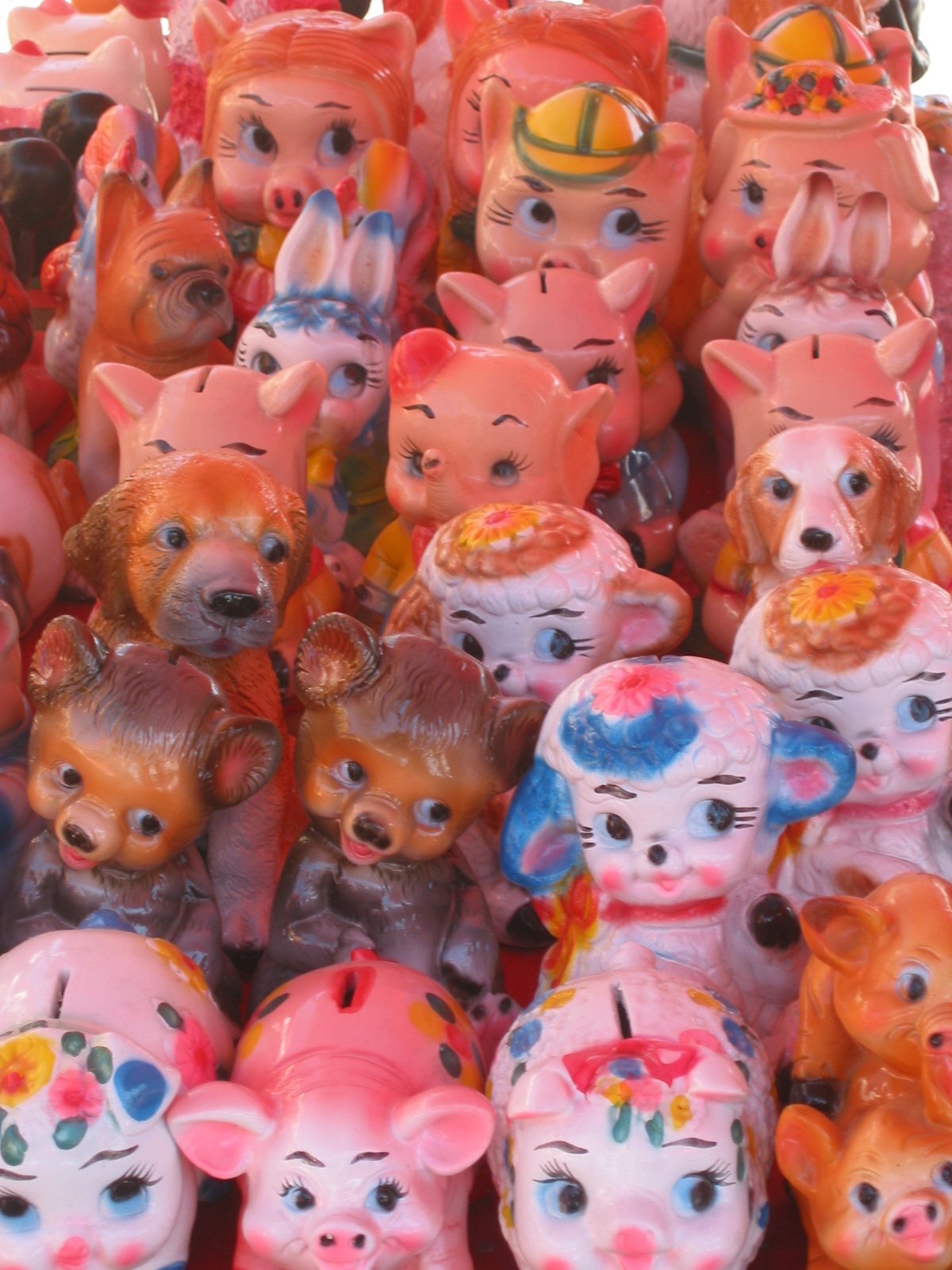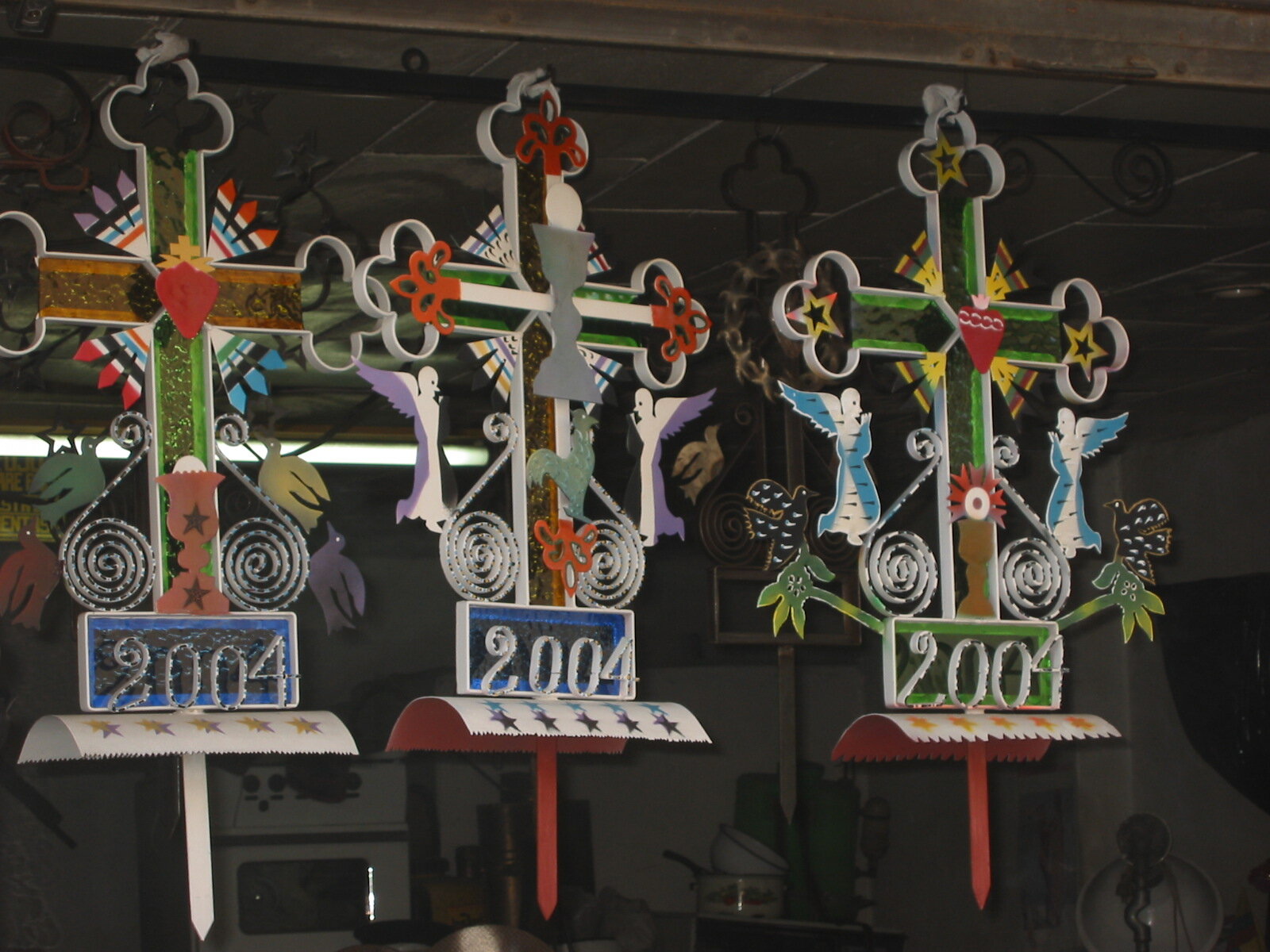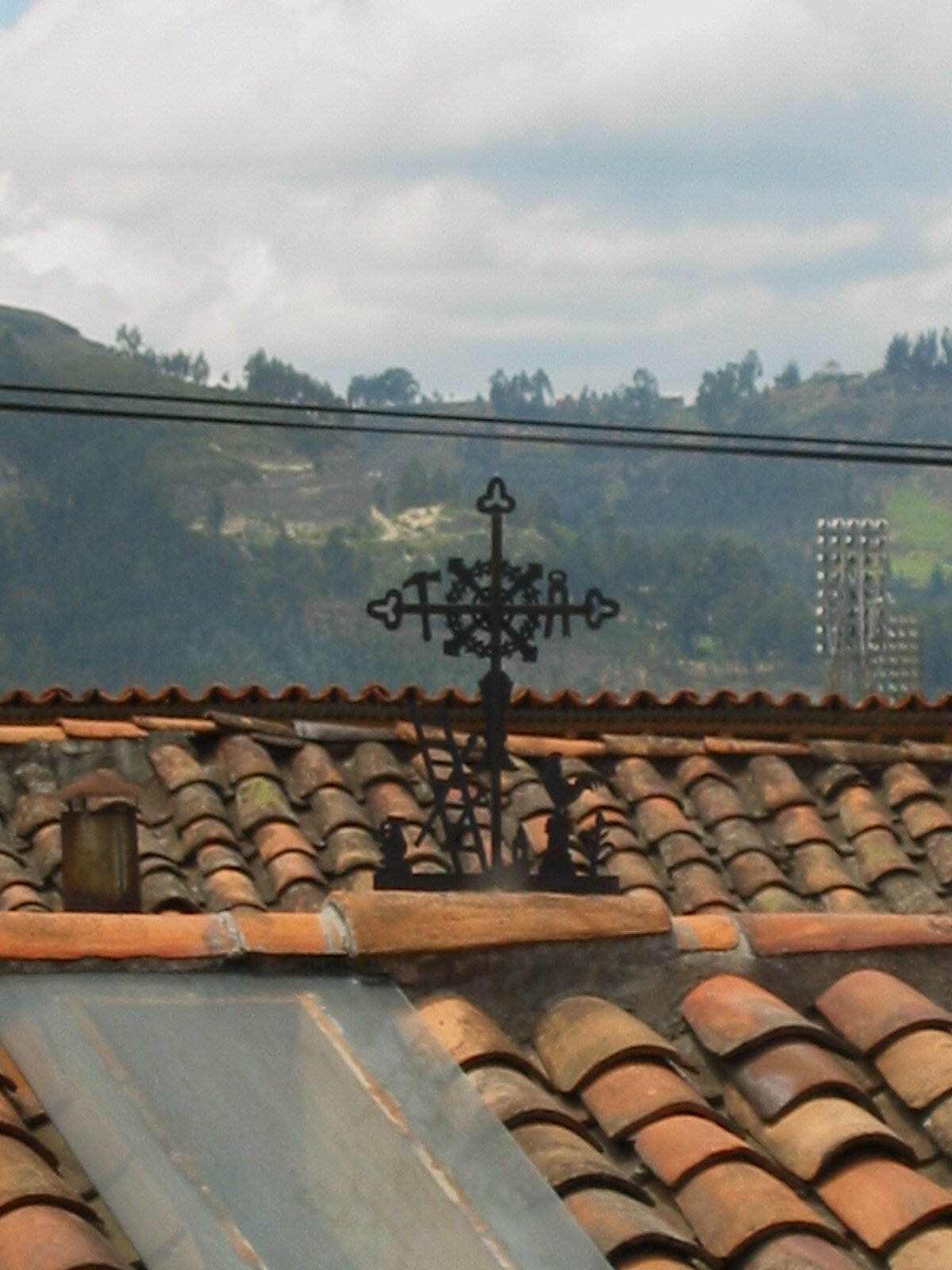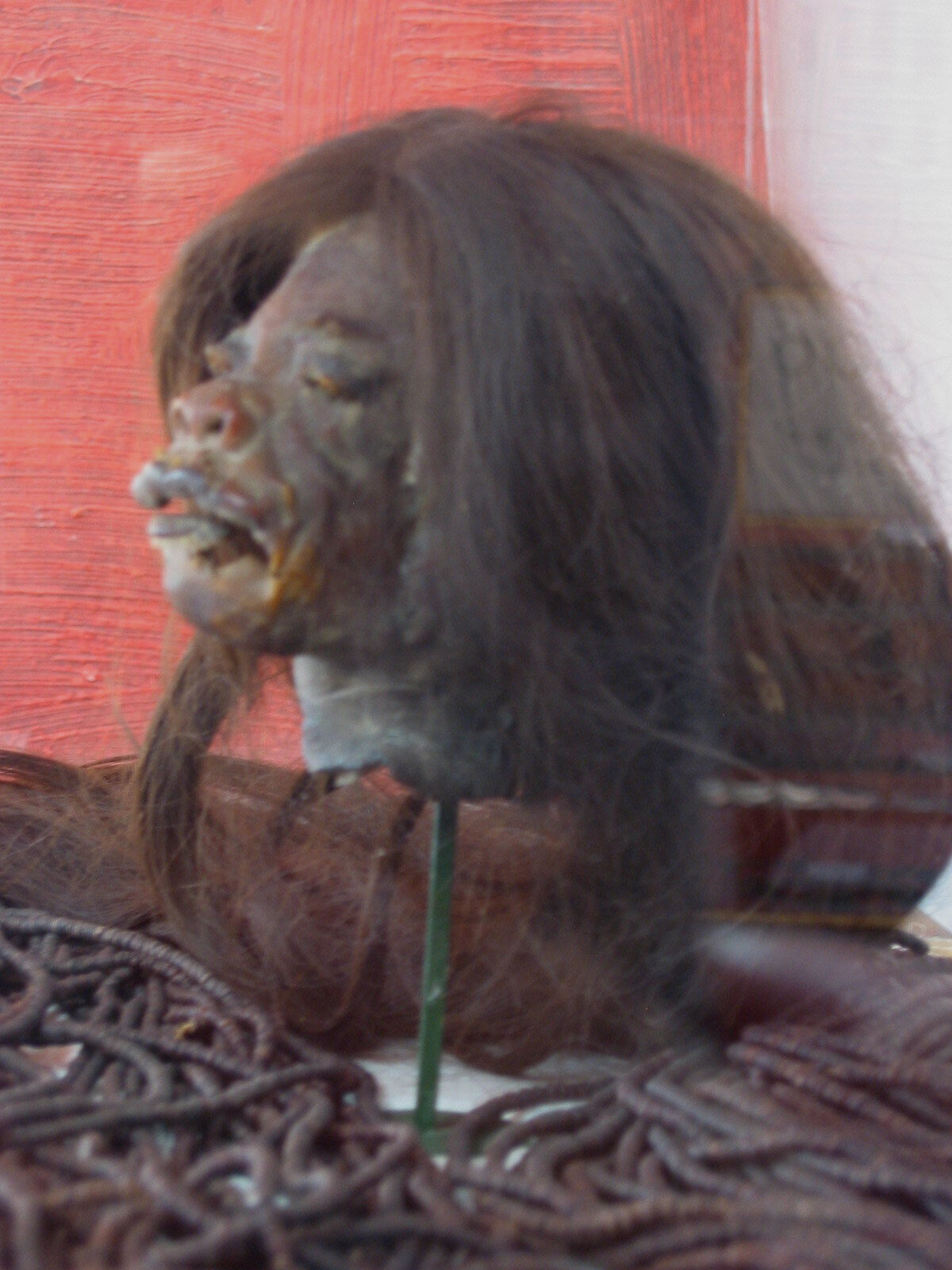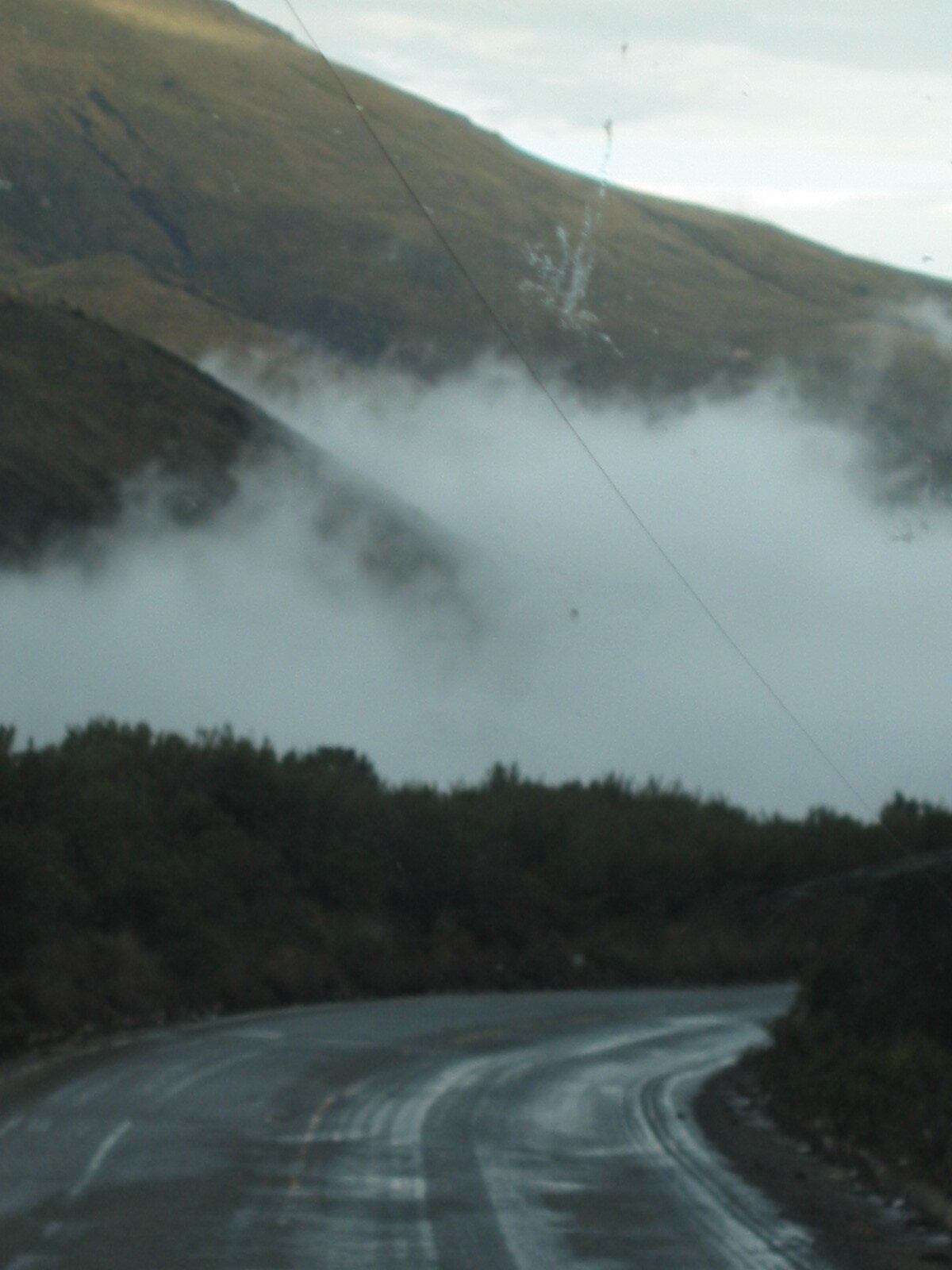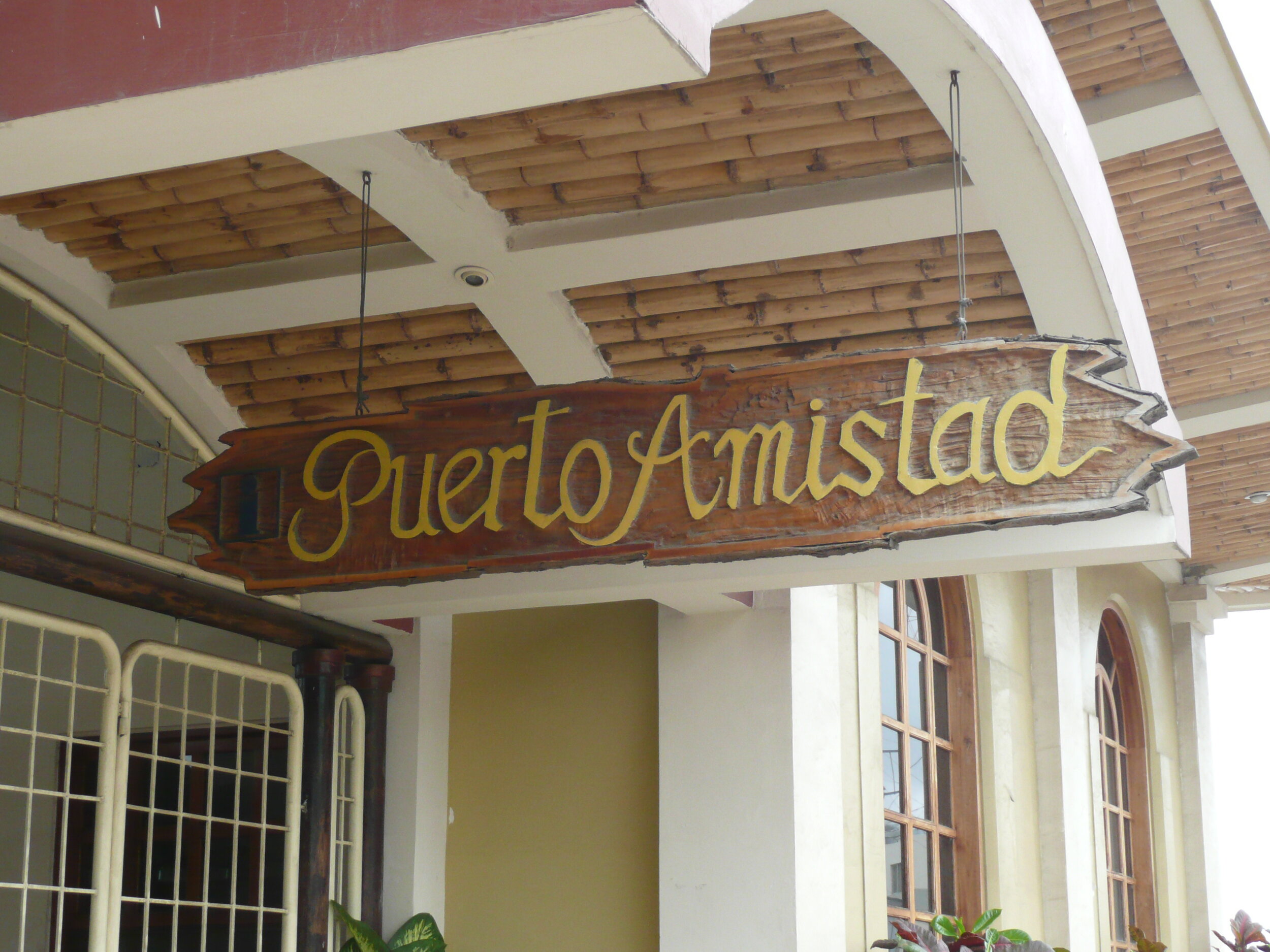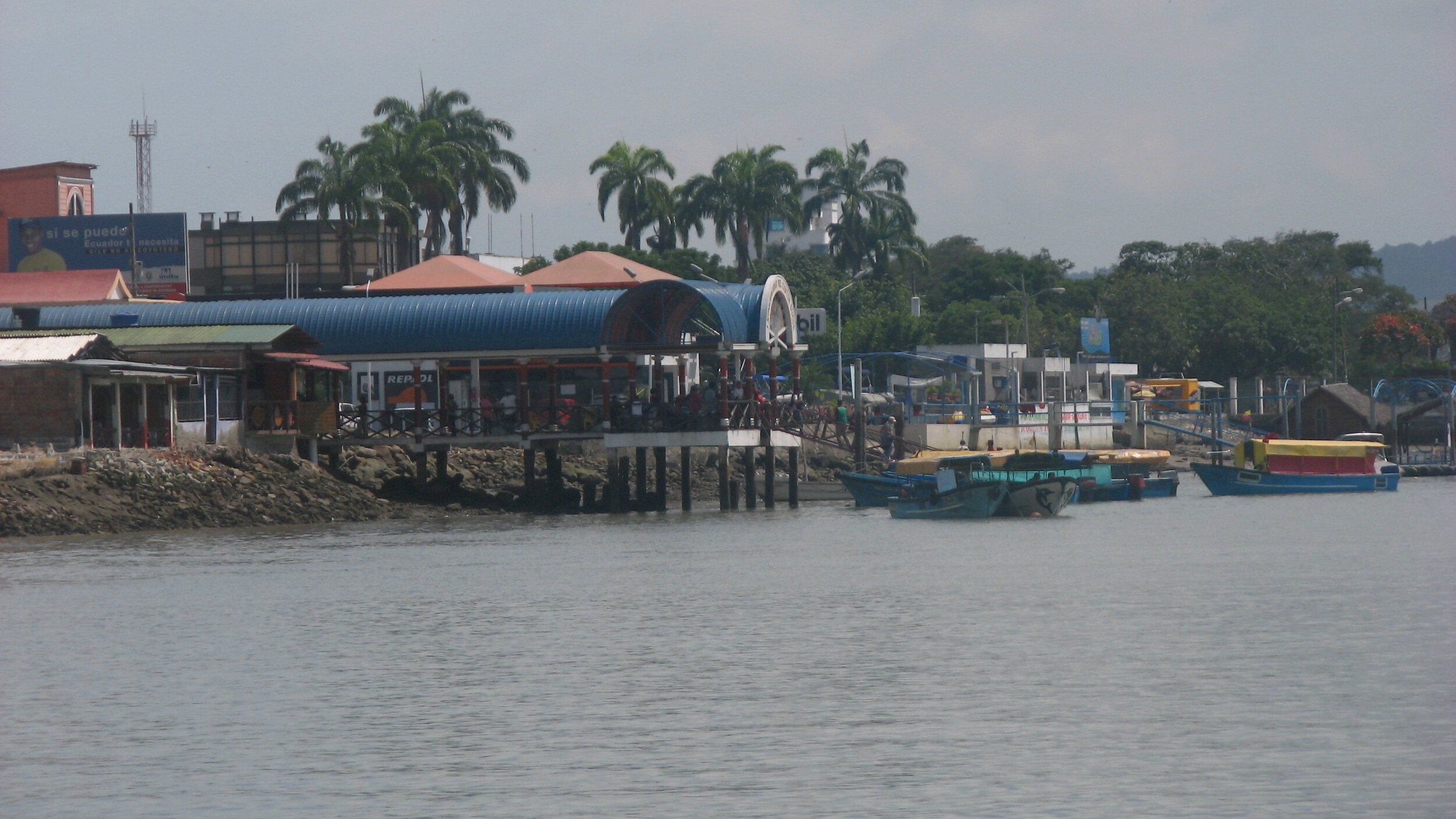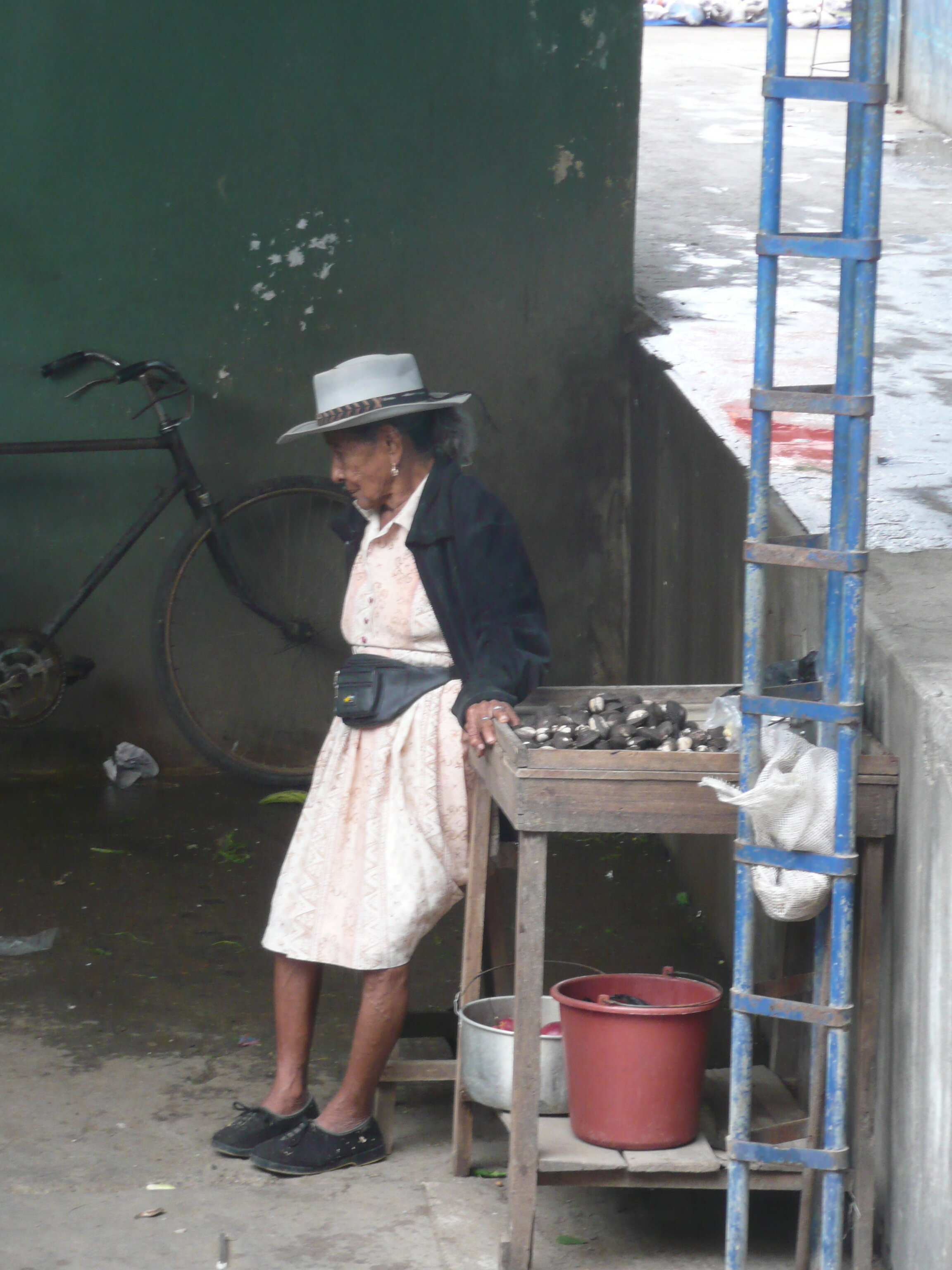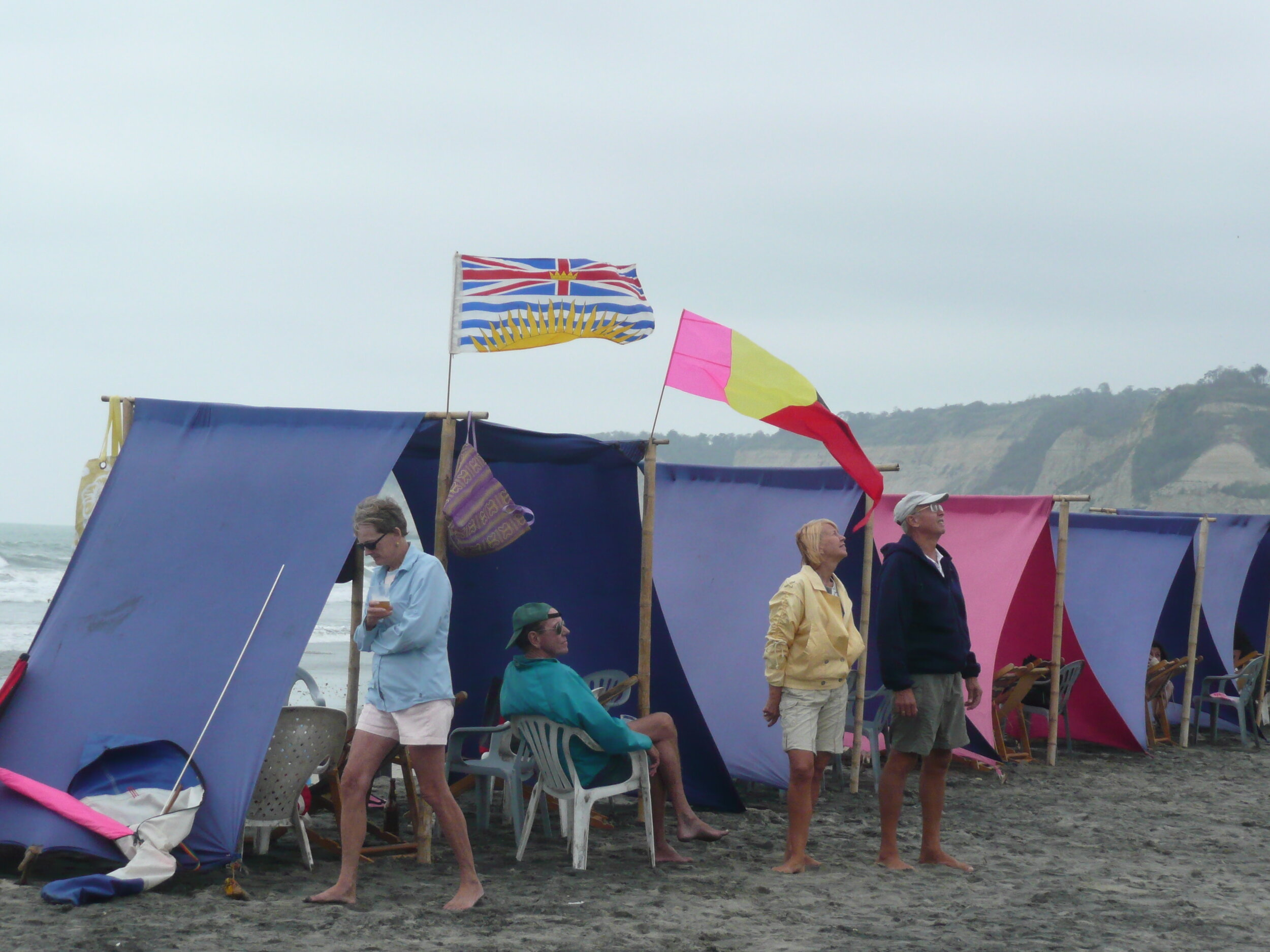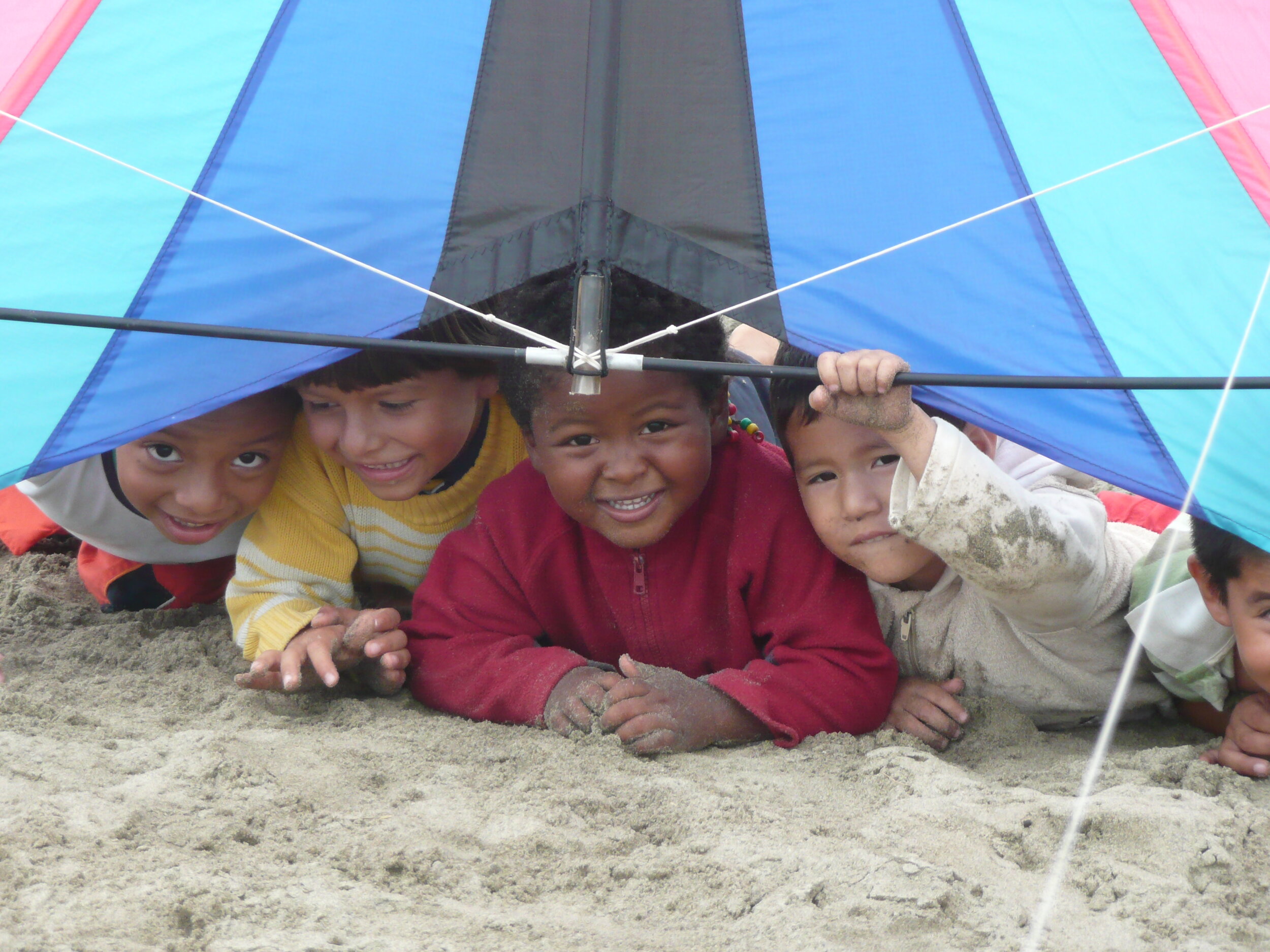Ecuador… La mitad del mundo… the middle of the world
Ecuador, sitting on the Equator, is aptly named. From the volcanic peaks of the Andes to Amazonian rain forest, to its high sierra, coastal plains and the world-famous Galapagos Islands, this fascinating country is one of the most biodiverse in the world and beckons exploration at every turn.
Republica del Ecuador
Capital: Quito
Area: 103,000 mi² - smallest of the Andean countries, about the size of Colorado.
Population: 11 million - 50% in cities
Highest Point: Chimborazo (20,109')
Language: Spanish (Castellano) and Quechua (People's tongue)
Currency: Used to be the sucre, however, in 1999 the U.S. dollar became the official currency.
Exports: Petroleum is the chief export. Other major exports include bananas, cocoa, coffee and shrimp.
The equator crosses Ecuador just north of Quito and gives the country its name. Ecuador is Spanish for equator.
Ecuador 2003 - 2005
While sailing in the Caribbean, I’d read about Ecuador in several travel magazines and heard about visiting there from several cruisers. I mentioned it to David. His response was “Well, that’s easy. We just go through the Panama Canal and take a left.” And that’s just what we did, crossing the Equator for the first time while en route.
We're sure you thought, as do many people, that equator was an imaginary line stretching around the planet, but as you can plainly see, it's actually very real and bright yellow. We're told it is sometimes nearly invisible, but we were lucky as it was quite clear the day we crossed... reflection of the sun on the water maybe? Here, David pays homage to Neptune as we crossed the equator for the very first time. We are now ‘Shellbacks’.
According to Nauticapedia, ‘Sailors who have already crossed the Equator are known as Shellbacks, and those who have not are nicknamed Tadpoles or Pollywogs. A Golden Shellback is a person who has crossed the Equator at the 180th meridian (the International Date Line ).’
Our first port of call in Ecuador was the port of Manta, a large commercial tuna fishing port purported to be the tuna capital of the world! The harbor in Manta was crammed full of fishing boats, but there was room enough for us to anchor. We were able to clear into Ecuador and also get permission to stop at Isla de la Plata en route to Puerto Lucia Yacht Club in La Libertad.
Blue-footed Booby at Isla de la Plata
Isla de la Plata
Also known as the "Poor Man's Galapagos", Isla de la Plata is part of the Machililla (Mah-chi-lee-ya) National Park. There are several species of birds and plants that are only found there and in the Galapagos, and nowhere else on earth... including the Waved Albatross. Since sailboats seldom visit, we thought we'd give it a try.
The island got its name when Sir Francis Drake, having captured a Spanish galleon, stopped here to assess his booty. "Plata" is the Spanish word for silver, but also the common word for money. Isla de la Plata is small... about 4 mi², but packed with lots of birds, animals and plant life including sea lions, red and blue footed boobies, frigate birds, albatross, and in season, it is the mating area for humpback
whales.
Nine of Cups ‘on the hard’ at Puerto Lucia Yacht Club.
Puerto Lucia Yacht Club, La Libertad
The city of La Libertad and the Puerto Lucia Yacht Club heralded the end of another passage... Colombia to Ecuador... a total of 1,280 nautical miles. Nine of Cups needed some major work done here (teak decks removed among other things) and would be "on the hard" a total of 5 months.
Though we worked hard during these months, we also found time to play. We explored locally, we traveled around Ecuador extensively and happily made and shared memories with many new friends, both cruisers and Ecuadorians alike.
Puerto Lucia Memories
Montecristi
The truth about Panama Hats... they’re not from Panama! Everyone thinks the Panama Hat is made in Panama... makes sense, right? But they are
actually made (and always have been made) in Ecuador. Straw hats woven along the Ecuadorian coast were taken to Panama initially to be sold to canal workers and, after the canal opened, to affluent westerners passing through the Panama Canal. Since Panama was the major export center for the hats, people mistakenly thought they were made in Panama and named them "Panama Hats". While shopping for hats there, David learned about counting puntos, the number of weaves per inch, which is one measure of quality in a Panama hat.
Guayaquil
Ecuador's largest city, Guayaquil, (~2 million people) offered lots of sightseeing and shopping. We took leisurely walks through Seminario Park, aka Iguana Park because of the iguanas that roam there. We meandered past historic statues and majestic cathedrals and ambled along the Rio Guayas.
From the Malecon (boardwalk along the river), we could see the brightly colored houses of the Barrio de las Penas, a famous old neighborhood that sprawled up a hillside. Originally home to writers, poets and artists, the area was being restored as part of a city reclamation project. The climb to the top of the hill is via 444 steps through the neighborhood that is now primarily restaurants and shops, though some private homes remain.
View of Las Penas looking down from the 444 steps leading to the top.
Mount Chimborazo
The highlight of our first Ecuadorian inland trip was a climb to the second refuge hut on Mt. Chimborazo, the highest mountain in Ecuador in the Cordillera Occidental range of the Andes. Though the summit is 6,263m (20,549 ft), we only climbed to the hut at 5,000 meters (16,000 feet). This is the highest we had ever been on land and the furthest from the center of the earth. The climb was cold and windy, but for most of the trek, the sun was out and the mountain was dazzling in its brilliance. We lunched at a lovely parador (roadside inn) where we were introduced to a wonderfully rich Ecudorian potato-cheese soup called locro. Below, our view of the mountain from the parador.
Did you know? The summit of Mount Chimborazo is the point on Earth closest to the sun. Due to the mountain’s location along the equatorial bulge, its summit is the farthest point from the Earth’s core. This also means that Ecuador is the closest country to space.
The dazzling brilliance of Mt. Chimborazo, highest peak in Ecuador
Riobamba
On the same inland trip, we took a train ride. The famous El Nariz del Diablo (Nose of the Devil) is a hair-raising railroad descent from Alausi (2607m) to Sibambe (1000m) via narrow gauge track along a tortuous route of switchbacks. At a 45 degree declination, it is said to be one of the steepest in the world. Add to this the fact that you sit ON TOP of the railroad car, not inside it.
Note: Due to the deaths of two tourists and a few broken bones of others, the train now limits riders to the interior of the train only. Not quite the same thrill.
This view of our boots gives you a feel for the dizzying height and lots of air beyond with no view of the tracks below or beyond.
when the tracks ended, the passengers were enlisted to turn the caboose around.
Otavalo
Located north of Quito, Otavalo, home of the longest continuously running market in Ecuador, is only a two hour bus ride away and it's fantastic. We bought alpaca sweaters and teddy bears, locally woven table linens and fine alpaca wool scarves, beautiful jewelry and whatever else caught our fancy. The market is comprised of several distinct sectors. An animal market just outside of town that opens at 5am for locals to trade, barter, sell
and/or buy livestock including cows, sheep, horses, goats, pigs and sometimes llamas. Crafts for tourists is by far the largest part of the market and
the booths go on for blocks and blocks. There is a separate area for fresh veggies, fruit, meat, bread, pastries and spices. There is a section for
housewares (pots, pans, utensils) and "imported from China" clothing. There is also an area for locals to buy material and jewelry for making their
customary indigenous clothing. The riot of color, a cacophony of sound and distinctive smells make this an overwhelmingly pleasant, sensual experience.
Otalovalean women are the most elegantly dressed of all the Indigenes, I think. They wear long, black or gray wool wraparound skirts with a white underskirt and a woven sash around their waist. Their blouses are white lace with embroidery around the necks and sleeves cuffs. They wear a
shawl and like others, use another shawl to wrap things (including babies) and tote them on their backs. They wear several strands of gold handblown glass beads, coral bead bracelets and gold earrings. They have a way of piling a woven piece of wool on their heads for a head covering.
They wear their hair in long, black ponytails wrapped in woven ribbons.
Quito
Quito is Ecuador's capital and second largest city. The historic centre of Quito is one of the largest, least-altered and best-preserved in the Americas and as such, it is a UNESCO World Heritage Site. Quito is 9,350’ (2,850m) above sea level, making it the highest official capital city in the world. La Paz, Bolivia is higher, but it is not the constitutional capital (that’s Sucre), only the seat of government. We definitely felt the altitude here.
Mitad del Mundo (Middle of the World)
Having a picture taken ON the equator is a must at Mitad del Mundo (Middle of the World), a park which demarcates and celebrates the equator (although we learned that the equatorial line is actually some 300m away!) Straddling two hemispheres is not as hard as we had imagined and being in the southern hemisphere does not require one to hang upside down by their toes.
One of the myths perpetrated at the Equator is that you can balance an egg on its end. Well, you can, but… you can elsewhere, too. This egg-balancing trick is just an old wives' tale. There is no gravitational change on the Equator that would help an egg balance. Standing an egg on its end is something just about anyone can do any day of the year. The feat simply takes the right egg, a little practice, and a lot of patience.
Another myth at the Equator? Some folks insist that water always swirls one direction in the Northern Hemisphere and the opposite direction in the Southern Hemisphere. They even cite the well-known Coriolis effect to prove their point. Scientists, however, have proven that the swirl direction has more to do with the direction that water enters a basin and/or the shape of the basin. Despite the myths, we had a grand time there.
A middle of the world, trans-hemispheric, Equatorial kiss
Cuenca
One of our favorite Ecuadorian cities of all was Cuenca. Santa Ana de los Cuatro Ríos de Cuenca, commonly referred as Cuenca is located in the highlands of Ecuador at ~2,560 metres (8,400 feet). The center of the city is listed as a UNESCO World Heritage Site due to its many historical buildings.
Catedral de la Inmaculada Concepción is one of Cuenca’s most picturesque landmarks
Like many cities, the market is large and lively and offers most anything anyone would need or like to buy. We wandered around the city, exploring and enjoying the sights. There was always something new to see.
We also had the opportunity to visit the world-renowned Galapagos Islands and explore several of its islands as well as meet some of its more famous inhabitants. We’ve given the Galapagos Islands its own page. Click here to see what fascinated Darwin so much.
Ecuador July-September 2008 - Bahia de Caraquez, Ecuador
We returned to Ecuador in 2008 after ‘accidentally’ circumnavigating the South American continent and transiting the Panama Canal for the second time with Nine of Cups. The plan had been to cross the Pacific this year, but delays in the Canal transit caused us to miss the best ‘weather window’. We decided instead to spend time in Ecuador once again. Ecuador is a very special country for us and our memories of our last visit were still vivid. Though disappointed that we weren't making our trans-Pacific passage this year, we weren't the least bit disappointed to be back in Ecuador.
Instead of going further south to La Libertad & Salinas as we did last time, we opted to stop in Bahia de Caraquez. Located on the Rio Chone, Bahia (as the locals call it) was considered a major shipping port until the river starting silting. Now, the sand bar at the entrance to the river requires a crossing at high tide and a pilot to advise how to negotiate the tricky entry.
We arrived around 0530 and Frank "Tripp" Martin, owner of Puerto Amistad, met us along with the pilot in time to make the early morning crossing of the bar without incident. After 77 hours of motor-sailing, it felt good to drop the hook and relax a bit. (Hello World got the last available mooring) Cups definitely needed tidying up and a good deck wash and the crew needed a cup of tea and a nap. An official from the Capitania's office came about 0930 to do an on-board inspection and completed preliminary paperwork. We were left to ourselves until going ashore in the early evening,
The Capitania was close to Puerto Amistad and Tripp completed the paperwork for the Port Captain and Customs for us. It still took us three tries to get our clearance papers handled. Then, two trips to Manta (2 hours away by bus) to complete our immigration paperwork and get our passport stamps. There is no such thing as ‘hurry’ in South America.
Puerto Amistad was a pleasant place to be. It had its own dinghy dock, a thatched-roof restaurant and bar and a good cruiser hangout. Laundry, a book exchange and hot showers were also a big plus.
Bahia de Caraquez... the town
Bahia de Caraquez (ka-RAH-kez) is a resort town of about 30,000 people which lies on the Ecuadorian coast between Esmeraldas to the north and Manta to the south. It is strategically located on the Rio Chone and though no longer considered a strategic shipping port, it is a getaway place for Quitenos (folks from Quito) to come to relax during the vacation and holiday months. A peninsular, with the Rio Chone on one side and the Pacific Ocean on the other, the temperate climate makes this a year round destination for Ecuadorians, cruisers and tourists alike.
The town offered all sorts of shops, grocers and fresh markets and we frequented them all. Everyone was friendly, helpful and went out of their way to provide service.
Typical Ecuadorian hardware stores sell everything from toilets to nails, rebar to meat grinders. This was David's favorite store in town and he was on a first name with the owner. There’s no browsing around though, you have to ask for everything you want or need which required learning some Spanish.
Buying supplies and materials wasn’t all that hard. Getting it back to the boat was another issue. Eco-taxis or pedicabs are big in Bahia and they're everywhere. Above David bought a piece of plywood and paid the 75cents to take an eco-cab back to Puerto Amistad. Last of the big spenders.
The "mercado" or fresh market is held daily, but the best and biggest day was early Saturday morning. The whole town seemed to be there and it was the best time to buy fresh produce for the week. You can buy chickens "on the hoof" as it were or already killed and plucked. Fresh cheese (queso fresco), eggs, fruits and veggies are also sold. If you needed new socks, a backpack or a bra, you could probably find it, too.
Being right on the coast, there is also a fresh fish market. Shrimping is a huge industry in Ecuador and at $3/pound for jumbo shrimp, it's quite the bargain. My favorite lady, however, was this old woman whom I named Dona Concha. She offered only clams for sale at 10 cents each and stood by her booth every day, all day long.
What goes on in a cruising community like Bahia? Lots! Here's a sampling...
It seems as if we were always busy. Everything seems to take longer when you're cruising. For instance, we needed to haul or have water delivered on a regular basis since the river is too silty for the watermaker. Once on deck, the water needed to be decanted into the tanks. Going into shore required launching the dinghy which was usually kept out of the water because the growth on the bottom was a pain to clean. You must dinghy to shore with your garbage, perhaps your laptop if you want to do internet and anything else you might need ashore (including shopping bags for the market). You invariably forget something (like your shoes or hat or glasses or camera) and have to go back for it. Then you must tie up the dink and head out to do your errands or perhaps have lunch or dinner or a drink at the bar. There's always someone there to chat with... it's hard to move through the bar area quickly since it is a center of cruiser activity.
If you're doing a boat project (and few cruisers aren't), there are multiple trips to the multiple hardware stores required for miscellaneous hardware, supplies and lumber. Perhaps what you need is available in town. If not, it's off to Manta, the closest "big" city, two rough-road hours away from Bahia. Need a loaf of bread? The closest place is about a 10-15 minute walk. You can take an eco-taxi (the fellows who pedal you around), but sometimes it takes just as long. Produce (fruits and veggies) is primarily sold at the fresh market and bread at the panaderia or perhaps you can buy some of the local pan de yucca sold warm by vendors on the sidewalks.
And there are quite a lot of social activities, too. In fact, it's hard to find a free night just to spend on your boat as there always seems to be
something going on. Just a few of the things we did while at anchor:
*Cat sat and boat watched *Resurrected cruiser "movie night" at Puerto Amistad *Gave two cruising presentations: Peru and Chile *Met with Ecuadorian Minister of Tourism *Judged singing/dancing competition at Interamericano School *Updated the website *Potluck socials *Italian night at the local Coco Bongo hostal *Organized a tour with English-speaking guide to local Museo de Bahia de Caraquez to learn about
history & culture of the indigenous people here *Visited Museo de Bahia de Caraquez *Miscellaneous dinners/drinks aboard lots of other boats
*Edited a book for a friend *Attended Giti Neuman "Handmade Paper" exhibit and met the artist *Visited Sainanda, a local animal shelter
New Fuel Tanks
We'd needed new fuel tanks for quite some time. David replaced one when we were in Ecuador last time. He constructed an epoxy tank
that fit inside the old steel tank and it has worked quite well, but it's a major project to undertake. We had gone across the Atlantic twice
with only one fuel tank and some jerry jugs on deck, but we thought it was time to take the plunge and get the tanks handled. We got quotes in
the USA for replacement tanks ... way too expensive. We got quotes in Panama ... better, but still too expensive. We got a new quote in Manta
and lo and behold, the price was reasonable and the company came with good references, so we decided to go ahead. The process was a
long, arduous one. Click here for a blow-by-blow description of our fuel tank travails.
Other Ongoing boat projects included:
*Annual maintenance on engine *New bimini and boom crutch cover and miscellaneous canvas projects *Repaired refrigeration (again...and again...and again) *Annual stove/oven removal/cleaning (yuck) *Stripped dorades and repainted
*Repaired/re-bedded several hatches, chainplates, hawser holes *Varnishing
It’s never dull and never boring.
Sidetrips...
We returned to Montecristi, a small, dusty, but colorful town known for its Panama hats and baskets. They also make great hammocks and swings. David got himself a new Panama and I bought a swing that I plan to give to Lin for her backyard. On the way back, we also stopped at Manta Sosote and visited one of the several ‘tagua’ shops that lined the streets there. Tagua, also known as vegetable ivory, is quite a versatile material and sustainable rainforest product. I purchased several pieces of jewelry to take home as gifts from Ecuador.
A Beach Day at Canoa
Cruisers going to the beach? You bet... even we like a day off from boat life once in awhile. So a group of us got together to take the ferry across the Rio Chone and then we caught a bus to the beach town of Canoa, about a 1/2 hour away. We rented a cabana and beach chairs for a total of $8 for the day and set up camp, living the high life when a beach vendor delivered cold beers to us while we sat in the shade and relaxed. One of our friends brought colorful flags to fly on our cabana as well as kites. The adults took their turns at kite flying, but it was the local kids who got the biggest kick out of trying to keep the kites airborne. Beachcombing and collecting shells was topped off our activities.
We left Bahia de Caraquez on 1 October 2008 and headed to the Puerto Lucia Yacht Club in La Libertad, Ecuador for a quick stop to visit some old friends. We caught a late afternoon high tide over the bar at the mouth of the Rio Chone and continued another few hours to an anchorage just north of Manta. An overnight motor-sail had us arriving at PLYC the following morning where it was like old-home week. We saw old friends, Galo Ortiz and his wife, Rita, completed all major chores and provisioned for a long passage.
Enough lollygagging around, it was time to get moving.
On 9 October, a Thursday, we left the dock in PLYC late in the day and just anchored off the marina. It was important that we didn't leave on a Friday ... bad luck for sailors! It was great to have a night to relax with chores done and get psyched up for a long passage. We estimated a passage of about 4,000 nautical miles but much depended on the winds. We headed south for Chile ... not down the coast as we’d done last time, but in a big semi-circle off the South American coast taking advantage of prevailing winds and avoiding the Humboldt Current. Farewell, Ecuador!

















